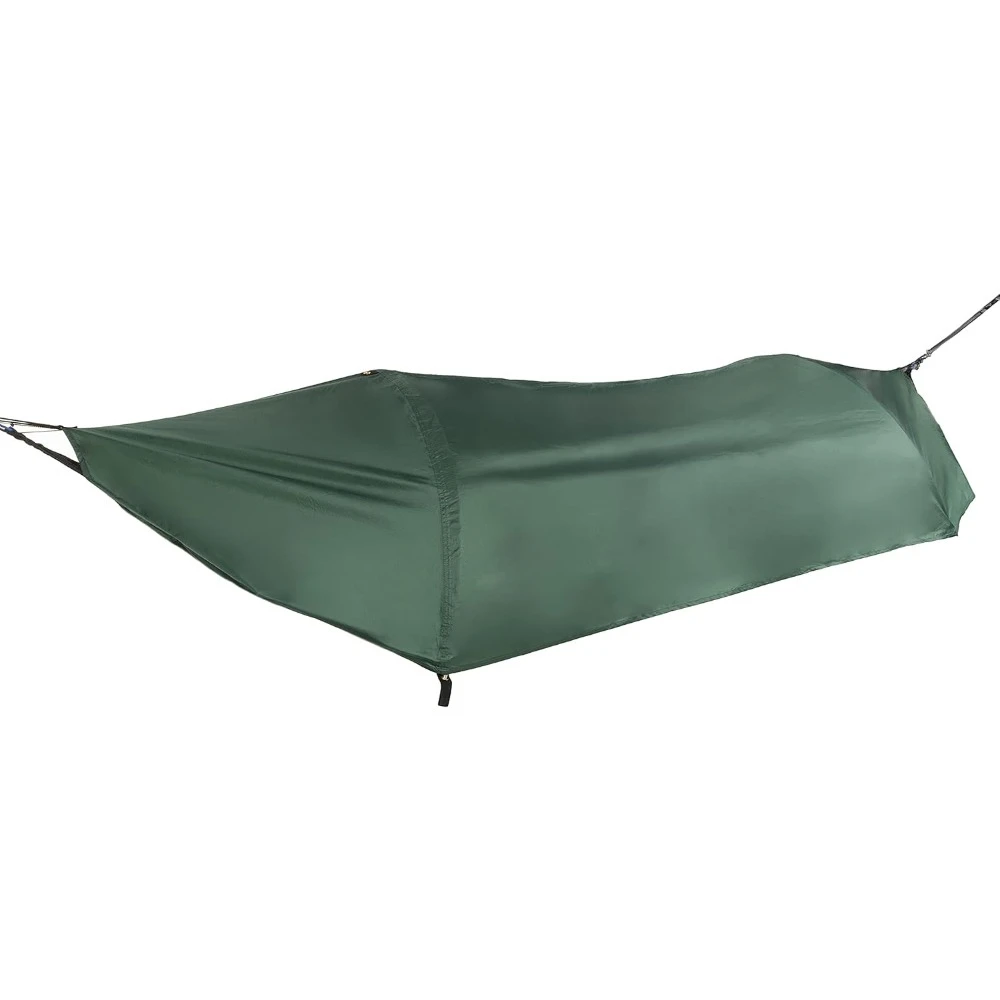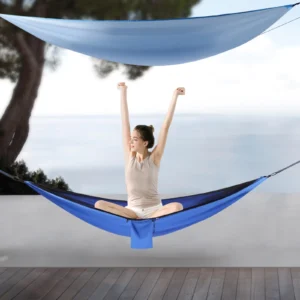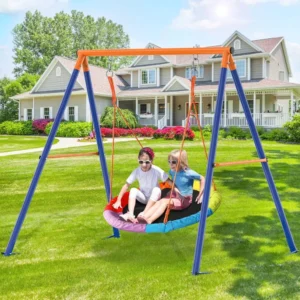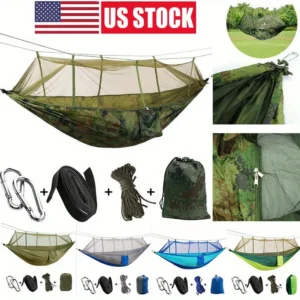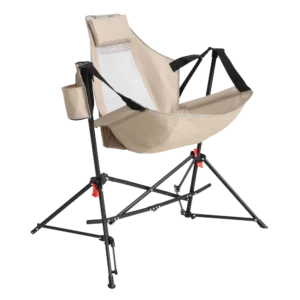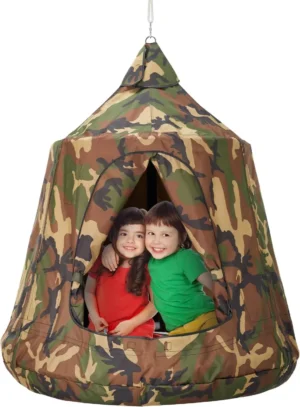Introduction: Why Choose a Compact Hammock for Backpacking Adventures
Backpacking adventures demand gear that balances weight, comfort, and versatility—qualities that modern compact hammocks deliver exceptionally well. These innovative shelters typically weigh between 10-25 ounces (compared to 2-4 pounds for a lightweight tent system) and compress down to roughly the size of a grapefruit when packed.
The benefits of hammock camping for serious backpackers extend far beyond mere weight savings:
- Freedom from ground conditions (rocks, slopes, wet terrain)
- Enhanced airflow and connection to nature
- Dual-purpose use as both daytime relaxation spot and nighttime shelter
- Quicker setup and takedown with practice
- Reduced environmental impact on sensitive ground
As you explore the transformative potential of ultralight hammock packing techniques for your wilderness journeys, you’ll discover why so many backpackers are making the switch from traditional ground shelters. At Outside Luxe, we’ve spent years refining our understanding of premium hammock systems to help outdoor enthusiasts elevate their backcountry experiences.
Our collection of ultralight camping hammock sets showcases the perfect balance of durability, comfort, and minimal weight that serious backpackers demand.
Understanding Compact Backpacking Hammocks: Beyond Basic Suspension
Materials Matter
True backpacking hammocks differ significantly from casual backyard options, primarily in their specialized materials. While recreational hammocks often use heavy cotton or polyester, backpacking versions employ high-tech fabrics like 20D-40D ripstop nylon that withstand trail abuse while minimizing weight. These technical materials can reduce a hammock’s weight by over 50% compared to casual options.
Dimensions and Capacity
When evaluating hammock specifications, focus on the critical balance between weight capacity and actual hammock weight. A proper backpacking hammock should support 250-400 pounds while weighing under 16 ounces for the hammock body alone. Length typically ranges from 9-11 feet, providing adequate diagonal lay space for most adults.
Design Variations
Two primary designs dominate the backpacking hammock world:
– Gathered-end hammocks: The classic design with fabric bunched at each end, requiring diagonal laying
– Bridge hammocks: Feature spreader bars for a flatter lay but add weight and complexity
Double hammocks offer extra fabric width (typically 6-7 feet) compared to singles (4-5 feet), providing more fabric for a comfortable diagonal lay position, though they add 2-4 ounces in weight.
The details in construction distinguish a truly trail-worthy hammock, as explained in our ultimate guide to ultralight hammocks that dives deeper into technical specifications and performance factors.
For protection against persistent insects, many backpackers find our camping hammock sets with bug nets provide the perfect balance of weight savings and practical protection in diverse environments.
Essential Benefits: Why Backpackers Are Switching to Compact Hammocks
Liberation from Ground Requirements: Unlike tents that require flat, dry, obstacle-free ground, hammocks work beautifully on slopes, rocky terrain, or wet areas. This dramatically expands your camping options in challenging environments.
Enhanced Connection to Nature: The elevated perspective offers superior views, better air circulation, and a more immersive wilderness experience. Many hammock campers report falling asleep watching stars through tree canopies—something impossible in a traditional tent.
Significant Weight Reduction: A complete hammock shelter system (including suspension, tarp, and bug protection) typically weighs 2-3 pounds total, often saving 1-2 pounds over an equivalent tent setup. Detailed information in our definitive guide to camping hammock weights shows how these differences compound over multi-day journeys.
Unmatched Versatility: During rest breaks, your sleep system doubles as a comfortable relaxation spot—a unique dual-purpose benefit tents can’t match.
Superior Comfort Potential: When properly hung and used with a diagonal lay, hammocks eliminate pressure points by contouring to your body, potentially providing better sleep than sleeping pads on uneven ground.
Rapid Deployment: Experienced hammock campers can set up their entire shelter system in under 5 minutes—roughly half the time of many tent setups.
Minimal Environmental Impact: By suspending your shelter between trees (using proper wide straps), you’ll leave significantly less trace than ground-based camping options that compress soil and vegetation.
The Complete Compact Hammock System: Essential Components
Hammock Body
The core component typically weighs 10-16 ounces and should be sized appropriately for your height and sleeping style. Key considerations include:
* Material density (20D-40D ripstop nylon balances weight and durability)
* Weight capacity (minimum 250+ pounds recommended)
* Dimensions (look for 9-11 feet in length)
Suspension System
The method of attaching to trees represents a critical yet often overlooked component, weighing 3-8 ounces:
* Tree straps (minimum 1-inch width to protect bark)
* Connection hardware (carabiners, cinch buckles, or whoopie slings)
* Avoid rope-based systems that damage trees
Weather Protection
A properly sized tarp (8-12 ounces) provides essential protection:
* Hexagonal or rectangular shapes offer best coverage
* Silnylon or Dyneema materials offer superior waterproofing at minimal weight
* Ridgeline length should extend beyond hammock ends by 8-12 inches minimum
Insulation Solutions
Unlike tents, hammocks require bottom insulation to prevent heat loss:
* Underquilts (12-30 ounces) suspend beneath the hammock, maintaining loft and warmth
* Sleeping pads (6-16 ounces) can work but tend to slide and compress
* Temperature ratings should match expected conditions
Bug Protection
Options include:
* Integrated bug nets (adds 6-10 ounces)
* Separate bug nets that envelop the entire hammock (8-12 ounces)
* Bug net “socks” that slip over the suspension
Our complete camping hammock systems incorporate these essential elements into cohesive packages that eliminate guesswork and ensure component compatibility.
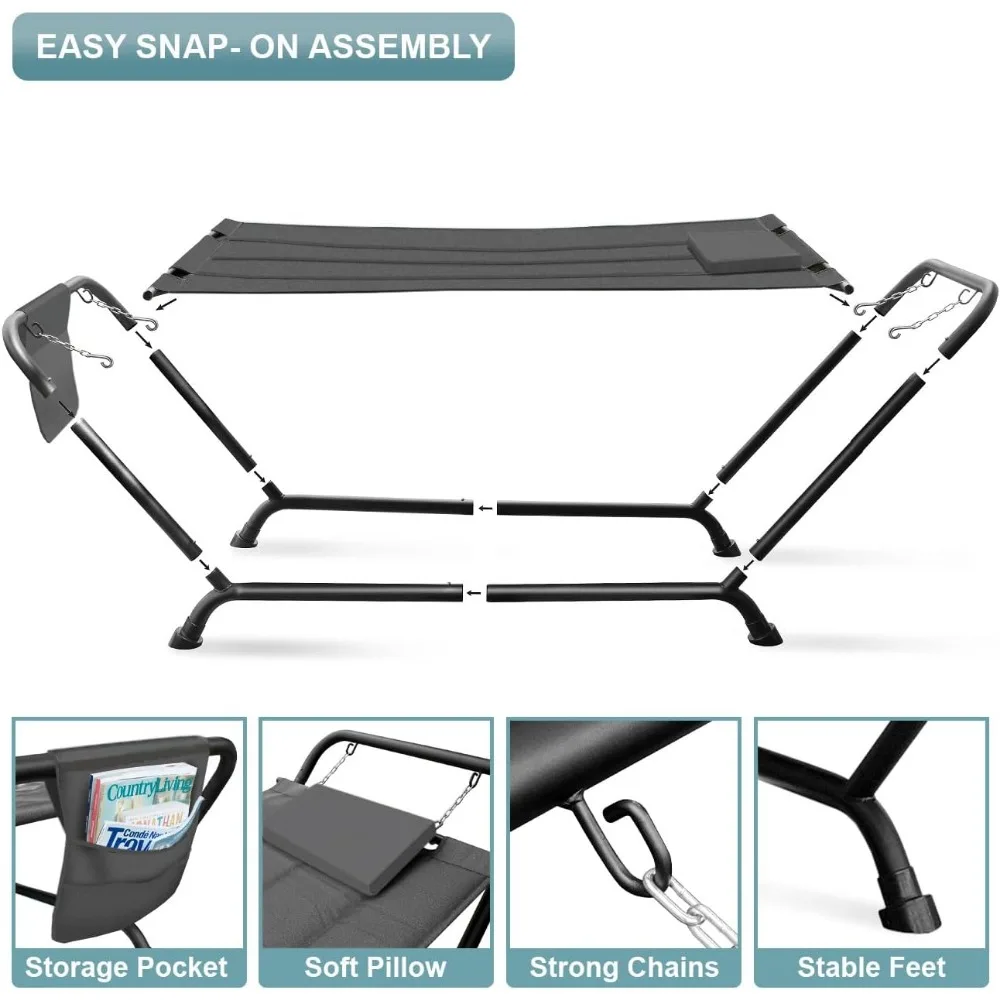
Selecting the Perfect Compact Hammock for Your Adventure Style
Finding your ideal hammock requires understanding how your personal needs intersect with product specifications:
Weight Priorities
- Ultralight enthusiasts (multi-day trips): Prioritize sub-16-ounce hammocks with minimalist suspension
- Weekend warriors: Can accept slightly heavier systems (16-24 ounces) with more comfort features
- Casual backpackers: May prefer durability over minimum weight (20-28 ounces)
Size Considerations
- Under 5‘10”: Standard hammock length (9-10 feet) works well
- Over 6’: Seek longer options (10-11 feet) for proper diagonal lay
- Side sleepers: Wider hammocks (double width) provide better diagonal positioning
Material Selection
The hammock’s fabric significantly impacts both weight and durability:
* 10-20D fabrics: Ultralight but require careful handling
* 20-40D fabrics: Best balance for most backpackers
* 40D+: Heavier but more abuse-resistant for rough conditions
System Integration
Decide between:
* Modular systems: Mix components from different manufacturers for customization
* All-in-one systems: Simpler purchasing but less adaptability
* Hybrid approaches: Core matched components with specialized accessories
Knowing how to efficiently pack a hammock in your backpack can significantly improve your overall experience regardless of which specific model you choose.
Essential Accessories: Enhancing Your Compact Hammock Experience
Underquilts: The Secret to Warmth
Unlike sleeping on the ground, hammocks compress the insulation beneath you, creating “Cold Butt Syndrome” (CBS) without proper underquilts. These specialized insulators hang below your hammock, maintaining loft and trapping warm air. Options include:
- 3-season underquilts (20-30°F rating, 16-24 ounces)
- Summer underquilts (40-50°F rating, 10-16 ounces)
- Winter underquilts (0-10°F rating, 25-32 ounces)
Tarp Considerations
Your rain protection should be selected based on expected conditions:
* Minimalist tarps: Diamond shape, 8-10 ounces, for fair weather
* Standard hex tarps: 10-14 ounces, balanced protection for most conditions
* Winter/extreme tarps: “Doors” that close completely, 14-22 ounces
Structural Ridgelines
This fixed cord running above your hammock (weighing just 0.5-1 ounce):
* Ensures consistent sag regardless of hang distance
* Provides attachment points for accessories
* Creates proper geometry for comfortable sleeping
Organizational Solutions
Small additions that greatly improve livability:
* Ridgeline organizers for storing small items
* Gear slings that hang beneath your hammock
* Drip lines to prevent water tracking down suspension
Our camping hammock and stand systems can be adapted for both backyard use and wilderness adventure, providing versatility that extends beyond pure backpacking applications.
Mastering Hammock Setup: From Trees to Perfect Comfort
Site Selection Fundamentals
Begin by identifying appropriate trees:
* 12-16 inches minimum diameter for stability
* Healthy, living trees without dead branches above
* Approximately 12-15 feet apart (adjust based on hammock length)
* Consider sun exposure, wind direction, and water drainage patterns
Step-by-Step Suspension Setup
- Wrap tree straps around trees at eye level (5-6 feet high)
- Secure straps with their attachment mechanism
- Connect hammock endpoints to the suspension
- Adjust tension to achieve approximately 30-degree angle from horizontal
- Test weight before fully committing
The Critical 30-Degree Angle
This specific angle:
* Minimizes forces on trees and suspension components
* Creates ideal geometry for a flat diagonal lay
* Reduces excessive sag while preventing an overly tight hang
Tarp Positioning
- Suspend ridgeline above hammock (8-12 inches higher)
- Center tarp over hammock position
- Stake out corners with 12-18 inches of space from hammock edges
- Adjust tension evenly across attachment points
The ultralight hammock setup guide provides additional visual guidance for achieving the perfect hang in various environments.
Advanced Sleeping Techniques: Mastering the Diagonal Lay
The secret to comfortable hammock sleeping isn’t lying parallel to the centerline but positioning your body diagonally across the fabric. This technique:
- Creates a significantly flatter sleeping surface by using the hammock’s geometry
- Reduces the “banana bend” that causes back discomfort
- Allows for multiple sleeping positions, including side sleeping
Optimal Diagonal Position
Position your body at approximately 30-45 degrees from the hammock’s centerline:
* Head and feet toward opposite sides of the hammock
* Shoulders and hips spread across the fabric width
* Knees slightly bent for natural alignment
Managing Common Pressure Points
- Shoulder squeeze: Adjust diagonal angle to spread weight more evenly
- Calf ridge: Position legs to minimize contact with hammock edge fabric
- Foot elevation: Use small clothing item under ankles if needed
Pillow Techniques
Unlike ground sleeping, hammocks require different pillow approaches:
* Smaller pillows work better than large ones
* Position under neck rather than head for better support
* Consider inflatable pillows that adjust to your position
For a deeper understanding of these techniques, our guide to the most comfortable hammock setup explores advanced positioning strategies.

Weather Protection Strategies: Staying Dry in Your Suspended Shelter
Tarp Configurations for Different Conditions
- Fair weather: High pitch with maximum ventilation
- Light rain: Standard coverage with moderate sides
- Heavy storms: Lower pitch with “doors” closed at the ends
- Winter conditions: Minimum clearance to ground, sealed ends
Wind Management
- Position hammock with the foot end facing the prevailing wind
- Lower tarp edges on windward side
- Use natural terrain features as windbreaks when possible
- Add supplemental guy lines to prevent tarp movement
Condensation Control
Unlike tents, hammocks excel at moisture management when set up properly:
* Maintain adequate ventilation between hammock and tarp
* Avoid setting up directly over water sources
* Use natural air circulation under the hammock
* Consider ridge vents in tarps for extreme conditions
Four-Season Adaptations
- Add a “top cover” over the hammock but under the tarp
- Use wider tarps that reach closer to the ground
- Consider a full winter sock (complete hammock insulation sleeve)
- Add reflective materials to underquilt for heat retention
Our selection of lightweight hammock sets includes options specifically designed to handle diverse weather conditions while maintaining minimal pack weight.
Hammock vs. Tent: When to Choose Each for Backpacking
| Factor | Hammock Advantage | Tent Advantage |
|---|---|---|
| Weight | Typically 0.5-1.5 lbs lighter for comparable protection | N/A |
| Setup Location | Works on slopes, rocky, or uneven terrain | Better in treeless environments |
| Sleep Comfort | Conforms to body, no pressure points | Familiar flat surface, better for stomach sleepers |
| Weather Resistance | Better ventilation, stays dry in wet ground conditions | Superior in extreme wind, alpine conditions |
| Setup Speed | Faster setup with practice (3-5 minutes) | More consistent in varied environments |
| Privacy | Limited | Superior |
| Environmental Impact | Minimal ground disturbance | N/A |
Best Environments for Hammocks:
- Forested areas with abundant trees
- Wet or uneven terrain
- Hot, humid conditions where ventilation is crucial
- Areas where suitable tent sites are scarce
Best Environments for Tents:
- Alpine regions above treeline
- Desert environments with sparse trees
- Extremely windy, exposed locations
- Situations requiring maximum privacy
Understanding the fundamental differences between camping and home hammocks helps clarify why specialized equipment matters in backcountry settings.
Advanced Tips: Taking Your Hammock Experience to the Next Level
- Eliminate redundant components: Use trekking poles to support your tarp instead of dedicated stakes
- Employ multi-use strategies: Tarp can double as ground cloth during day breaks
- Master the single-side entry: Learn to enter/exit without disrupting your insulation
- Integrate hydration systems: Run drinking tube along ridgeline for nighttime access
- Perfect your packing sequence: Arrange components in order of setup need
- Develop treeless alternatives: Practice using rock anchors or portable hammock stands
- Establish a foul-weather drill: Create a mental checklist for rapid storm response
The ultimate guide to packability of lightweight hammocks explores these optimization techniques in greater depth.
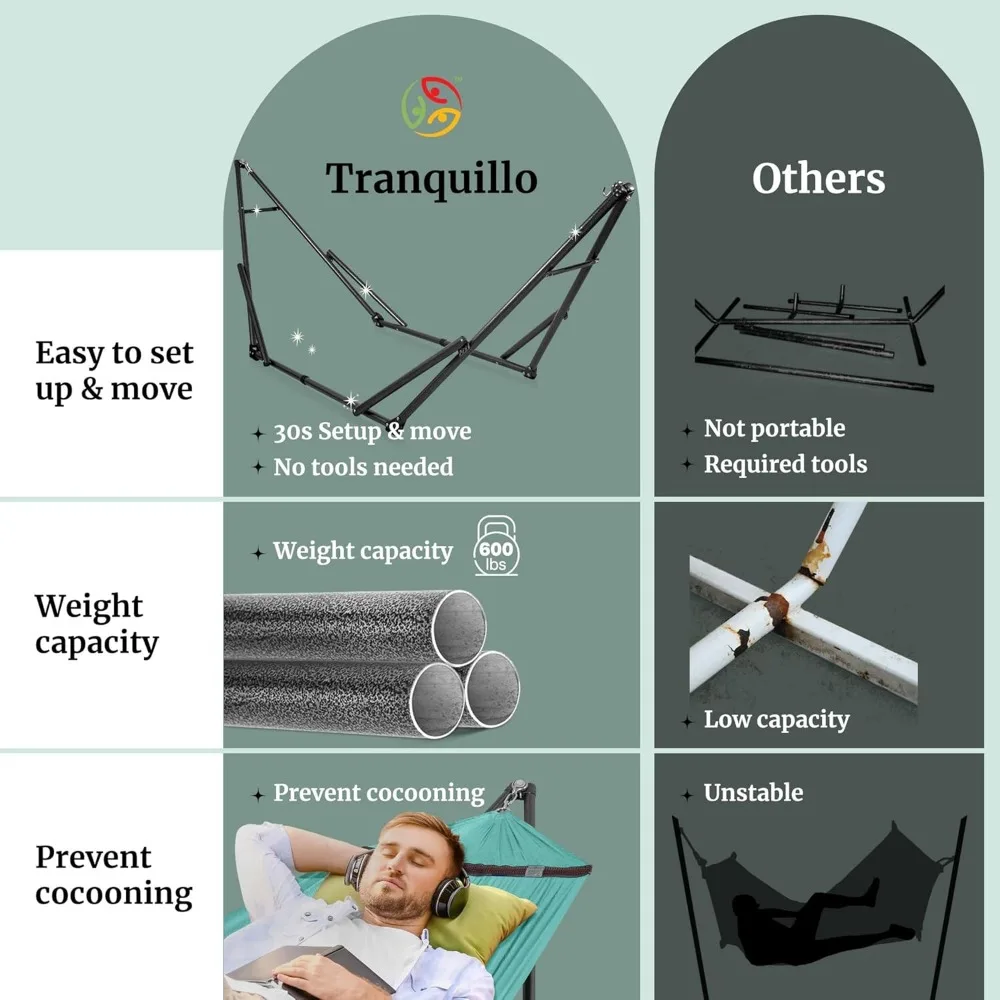
Common Challenges and Solutions: Troubleshooting Your Hammock System
Cold spots in underquilt?
Adjust shock cord tensioners to eliminate gaps, particularly around shoulders and feet. Add strategic minicord locks at problem areas.
Sleeping pad sliding around?
Use a pad sleeve or create “rails” with spare clothing along hammock edges. Consider non-slip fabric patches at key points.
Water entering during rain?
Add drip lines to suspension, ensure proper tarp ridgeline sag, and position ends lower than the center.
Condensation on bug netting?
Increase ventilation at hammock ends and ensure adequate spacing between hammock and tarp layers.
Limited suitable trees available?
Learn to safely use smaller trees by spreading the load across multiple anchor points or consider a lightweight hammock stand.
Experiencing shoulder/neck discomfort?
Refine your diagonal lay angle and experiment with different pillow positions and thickness.
For situations requiring rapid shelter deployment, our quick-setup hammock sets provide reliable protection with minimal setup complexity.
Camping Hammock Sets with Bug Net, Ultralight Camping Hammock Sets
$139.72 Select options This product has multiple variants. The options may be chosen on the product pageFolding Hammock Sets, Quick Setup Hammock Sets
Price range: $305.52 through $583.27 Select options This product has multiple variants. The options may be chosen on the product pageCamping Hammock Sets with Bug Net, Complete Camping Hammock Systems
Price range: $82.73 through $97.96 Select options This product has multiple variants. The options may be chosen on the product pageFolding Hammock Sets, Lightweight Hammock Sets
$295.80 Select options This product has multiple variants. The options may be chosen on the product pageComplete Camping Hammock Systems, Hanging Egg Chair Sets
$266.73 Select options This product has multiple variants. The options may be chosen on the product page
Conclusion: Embracing the Freedom of Compact Hammock Backpacking
Compact hammock systems represent much more than an alternative to tent camping—they offer a transformative approach to wilderness travel that many backpackers find revolutionary after making the switch. The unique combination of reduced weight, enhanced comfort, and connection to nature creates an experience that fundamentally changes how you interact with outdoor environments.
While there is admittedly a learning curve, the skills developed through hammock camping typically become second nature after just a few nights in the field. Starting with backyard practice before progressing to nearby overnight trips allows you to refine your system before venturing into more remote areas.
The versatility of modern hammock systems makes them suitable for nearly any forested environment across three seasons, with specialized setups extending their use into winter conditions. As you develop experience with your compact hammock system, you’ll likely discover personal modifications that further enhance your unique style of wilderness travel.
At Outside Luxe, we remain committed to offering premium hammock systems that strike the perfect balance between minimal weight, maximum comfort, and long-term durability—because we believe your backcountry sleep system should enhance rather than detract from your wilderness experience.

